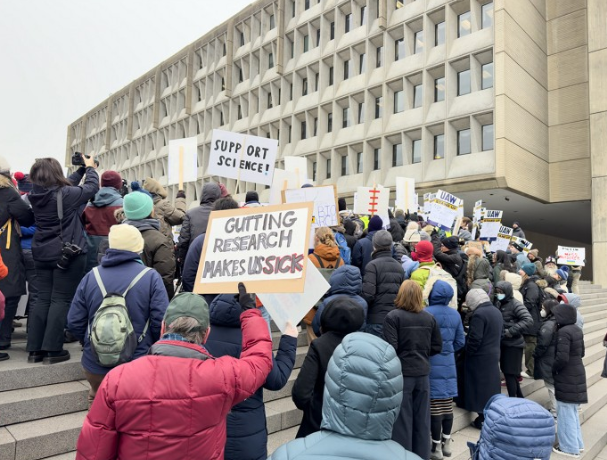The Trump administration’s tariffs marked a dramatic shift in U.S. trade policy, aiming to protect American industries and reduce the trade deficit – the amount a country’s imports exceed their exports. These tariffs also sparked economic uncertainty, raised consumer prices and disrupted global supply chains, leaving lasting effects on various sectors.
Tariffs act as a tax on imports, raising the price of goods ranging from household items to cars. For example, vehicles became $3,500 to $15,000 more expensive on average. Research estimated that tariffs cost the average American household an additional $1,300 annually, disproportionately affecting low-income families.
By imposing tariffs, the administration aimed to incentivize domestic production, reduce reliance on foreign imports and renegotiate trade deals to favor U.S. interests. Additionally, the tariffs resonated with voters concerned about job losses due to globalization, positioning the policy as a means to revitalize manufacturing and safeguard American workers.
These tariffs are being used as a negotiation tool with many countries to address issues like intellectual property theft, forced technology transfers and trade imbalances. China is a main focus in these issues.
Tariffs were instrumental in securing the “Phase One” trade deal, where China agreed to purchase more U.S. goods and services. This move aimed to reduce the trade imbalance rather than tackle deeper structural issues in China’s economy. Critics argue that these unresolved issues limit fair global trade competition, making the deal an incomplete solution.
Tariffs also targeted traditional U.S. allies like Canada and the European Union (EU) over disputes regarding steel and aluminum imports to help level the playing field for U.S. manufacturing. While they were intended to pressure nations into fairer trade practices, this approach often strained diplomatic relationships.
The taxes are projected to reduce long-run U.S. Gross Domestic Product (GDP) by 0.12 percent, decrease wages by 0.08 percent and eliminate 94,300 full-time jobs. Since tariffs increase the price of imported goods, citizens will be less likely to spend money which decreases consumption and negatively affects economic growth.
Countries like China, the EU and Canada imposed retaliatory tariffs on U.S. goods. For example, China targeted U.S. agricultural exports including soybeans, pork and corn, causing significant financial losses for American farmers. The EU responded with tariffs on iconic American products such as Harley-Davidson motorcycles, bourbon whiskey and jeans. These retaliatory measures further strained U.S. industries, specifically agriculture and manufacturing, leading to job losses and increased production costs.
Many businesses moved production out of China to countries such as Vietnam, Malaysia and Mexico to avoid tariffs. This created new logistical challenges and increased costs in the short term. The tariffs disrupted existing trade flows, leading to product delays, price increases and inefficiencies in global supply chains, with smaller companies in particular struggling to adapt.
Many voters, particularly in manufacturing-heavy states, viewed tariffs as a way to protect American jobs from being outsourced to countries with cheaper labor. However, critics argued that while tariffs were intended to preserve jobs, they often led to higher costs for businesses and consumers, offsetting the benefits of job protection.
Politically, many Republicans supported tariffs as a necessary measure to protect American industries and workers from unfair foreign competition. Democrats largely opposed tariffs, arguing they hurt American consumers and businesses through higher prices and retaliatory measures.
The use of tariffs has redefined U.S. trade policy, emphasizing economic nationalism and the protection of critical industries. This represents a significant departure from the free trade-oriented policies of previous decades. Critics argue that the trade deficit is driven by deeper factors, such as domestic savings rates and global demand for the U.S. dollar, which tariffs alone cannot solve.









